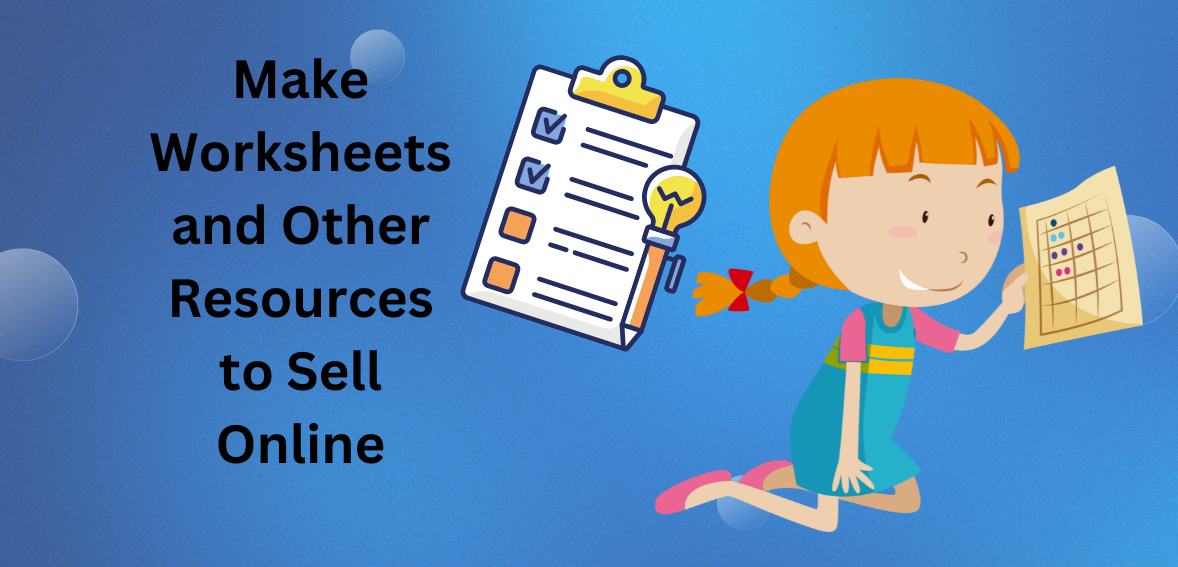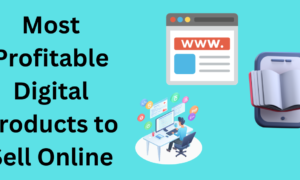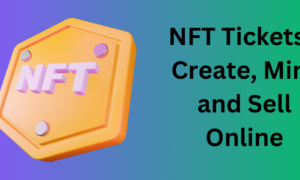Welcome to the exciting world of online resource creation! If you have a knack for designing engaging and educational materials, then selling worksheets and other resources online can be a fantastic way to share your expertise while earning some extra income. With the growing demand for digital learning tools, there has never been a better time to tap into this lucrative market.
But where do you start? How do you create high-quality resources that not only captivate your target audience but also stand out in a crowded marketplace? And how do you effectively market and sell your creations?
In this blog post, we’ll guide you through the process of creating and selling worksheets and other resources online. From choosing your niche and target audience to tips on design, marketing strategies, copyright protection, pricing considerations, and managing customer feedback – we’ve got it all covered!
So roll up your sleeves, unleash your creativity, and let’s dive headfirst into this exciting venture. Get ready to turn those brilliant ideas into profitable digital products that will make an impact on learners around the globe!
The Demand for Online Resources
The demand for online resources has skyrocketed in recent years, driven by the increasing popularity of digital learning platforms and the need to adapt to remote education. Students, parents, and teachers alike are searching for high-quality materials that can enhance their learning experience or supplement traditional classroom instruction.
One key reason behind this surge in demand is the convenience and accessibility offered by online resources. With just a few clicks, learners can access a vast array of worksheets, lesson plans, activities, and more – all tailored to their specific needs and interests. Gone are the days of lugging around heavy textbooks or spending hours scouring libraries for relevant materials.
Moreover, online resources offer flexibility in terms of delivery format – from printable PDFs to interactive digital files – allowing educators to cater to different learning styles. This adaptability ensures that students can engage with the content at their own pace and in ways that resonate with them best.
Furthermore, online resources provide an abundance of choices across various subjects and grade levels. Whether it’s math drills for elementary students or essay prompts for high schoolers preparing for college applications, there is something available for everyone. This diversity allows teachers to tailor their lessons according to individual student needs while keeping them engaged and motivated.
Additionally, as technology continues its rapid advancement, incorporating digital tools into educational practices becomes increasingly crucial. Online resources not only align with this trend but also enable educators to harness the power of multimedia elements such as videos, interactive quizzes, audio recordings – enriching the learning experience further.
In conclusion (Don’t use “In conclusion” but be conclusive), it’s evident that there is a significant demand for online resources due to their convenience, accessibility, flexibility, diversity, and alignment with modern teaching methods. As an aspiring resource creator, tapping into this growing market provides you with ample opportunities to make a meaningful impact on learners’ lives while building your brand
and generating income. So let’s dive deeper into the process of creating and selling your resources online.
Choosing a Niche and Target Audience
When it comes to creating and selling resources online, one of the first steps you need to take is choosing a niche and identifying your target audience. This will not only help you create more focused and tailored resources but also increase your chances of success in the competitive market.
To choose a niche, start by considering your own expertise and interests. What subjects or topics are you passionate about? What knowledge or skills do you possess that can be valuable to others? By aligning your resources with your areas of expertise, you’ll be able to provide high-quality content that resonates with your target audience.
Once you’ve identified a few potential niches, it’s important to research and evaluate their demand in the market. Are there already existing resources catering to this niche? If so, what gaps can you identify that haven’t been addressed yet? Understanding the competition and finding opportunities for innovation is crucial for standing out in the crowd.
Next, define who your target audience is within your chosen niche. Consider factors such as age range, educational level, specific needs or challenges they might have. The more specific you can get with defining your target audience, the better you’ll be able to tailor your content to meet their needs.
Remember that choosing a niche doesn’t mean excluding other potential customers outside of that particular segment. It simply means focusing on a specific group initially while still keeping room for expansion down the line.
Choosing a niche involves selecting an area where both passion and expertise align while also considering its viability in terms of market demand. Identifying a well-defined target audience helps ensure that the resources created are relevant and catered specifically to their needs
Creating Engaging and High-Quality Worksheets
Creating Engaging and High-Quality Worksheets
When it comes to creating worksheets to sell online, quality is key. You want your resources to stand out from the crowd and provide real value to your customers. But how can you ensure that your worksheets are engaging and high-quality? Here are a few tips:
1. Clear objectives: Before you start designing your worksheet, think about what specific learning objectives you want to achieve. This will help guide your content creation process and ensure that each activity serves a purpose.
2. Visual appeal: Don’t underestimate the power of aesthetics! Use colors, graphics, and fonts that are visually appealing and enhance the overall user experience. Make sure your worksheet is easy on the eyes and organized in a logical manner.
3. Variety of activities: Keep things interesting by including a variety of different activities in your worksheet. Mix up multiple-choice questions with open-ended prompts or interactive elements like puzzles or matching exercises.
4. Incorporate real-world examples: Make connections between the content being taught and real-life situations or scenarios whenever possible. This not only helps students understand the material better but also makes it more relatable and engaging.
5. Differentiation options: Consider adding differentiation options to cater to different learning styles or abilities within one resource. Include extension activities for advanced learners or additional support for struggling students.
6 Provide clear instructions: Ensure that your instructions are clear, concise, and easy for both teachers and students to follow independently.
By following these tips, you’ll be able to create engaging worksheets that teachers will love using in their classrooms! Remember, quality matters – so take the time to design resources that truly make an impact on student learning outcomes.
Tips for Designing Resources to Sell Online
Designing engaging and high-quality resources is crucial when it comes to selling them online. Here are some tips to help you create resources that will stand out and attract buyers.
Consider the format of your resource. Whether it’s a worksheet, eBook, or printable activity, make sure it is visually appealing and easy to use. Use colors, fonts, and graphics that complement the content and enhance its readability.
Ensure your resource aligns with the needs of your target audience. Research their preferences and learning styles to create content that caters specifically to them. This will increase the chances of attracting potential buyers who are looking for resources tailored to their requirements.
Another tip is to provide clear instructions within your resource. Make sure users understand how to complete each task or activity effectively. Include examples or step-by-step guides if necessary so that users can easily follow along.
Additionally, incorporate interactive elements into your resources whenever possible. Interactive features like drag-and-drop activities or clickable links can make learning more engaging and enjoyable for learners of all ages.
Moreover, regularly update and improve your resources based on customer feedback. Take reviews into account as they offer valuable insights on how you can enhance user experience in future versions.
By following these tips, you’ll be able to design attractive and effective online resources that resonate with your target audience while increasing sales opportunities.
Marketing and Selling Your Resources
Marketing and selling your resources is crucial to ensure that they reach the right audience and generate sales. Here are some effective strategies to promote and sell your worksheets and other online resources.
Utilize social media platforms such as Facebook, Instagram, Pinterest, and Twitter. Create visually appealing posts showcasing snippets of your resources or offering free previews to attract potential customers. Engage with your followers by providing valuable content related to your niche.
Leverage email marketing by building an email list of interested individuals. Send out regular newsletters containing exclusive discounts, new resource releases, or helpful tips related to education or learning.
Additionally, consider collaborating with influencers or bloggers in the education field who have a large following. They can review your resources or share them with their audience through sponsored posts or giveaways.
Furthermore, optimize your product listings on online marketplaces like Teachers Pay Teachers by using relevant keywords in titles and descriptions. Include eye-catching visuals and detailed explanations of how each resource can benefit teachers or students.
Moreover, consider creating a website where you can showcase all your products in one place. Optimize it for search engines by incorporating SEO techniques such as keyword research and creating informative blog posts about educational topics.
Engage in networking activities within the teaching community either through conferences or online forums dedicated to educators. This allows you to build relationships with fellow educators who may be interested in purchasing your resources or recommending them to others.
By implementing these marketing strategies effectively, you can increase the visibility of your resources and ultimately boost sales!
Platforms for Selling Online Resources
When it comes to selling your worksheets and other educational resources online, choosing the right platform is crucial. With so many options available, it can be overwhelming to decide which one will work best for you. Here are a few popular platforms that can help you get started.
1. Teachers Pay Teachers: This platform has a large user base of educators looking for quality resources. It allows you to upload and sell your materials easily, providing tools for marketing and managing sales.
2. Etsy: While primarily known as a marketplace for handmade crafts, Etsy also offers a thriving section dedicated to educational resources. It provides an opportunity to reach a broader audience beyond just teachers.
3. Your own website or blog: If you prefer more control over your sales process, creating your own website or blog can be a great option. You’ll have complete autonomy in terms of design, pricing, and marketing strategies.
4. Gumroad: This platform is popular among creators of digital products due to its ease of use and customizable features. It allows you to sell directly from your website or through social media channels.
5. Amazon KDP (Kindle Direct Publishing): If you’ve created ebooks or digital versions of your resources, consider publishing them on Amazon KDP. This platform reaches millions of potential customers worldwide.
Remember that each platform has its own fee structure and policies regarding copyright protection, so make sure to do thorough research before making a decision!
Dealing with Copyright and Protecting Your Work
In the digital age, protecting your work is vital to ensure that others do not misuse or steal your content. Copyright laws exist to safeguard creators’ rights and provide legal recourse if someone infringes upon your intellectual property. As a seller of online resources, it’s crucial to understand how copyright applies to your worksheets and other materials.
To protect your work, consider registering for copyright protection in your country. This process typically involves submitting an application and fee, but it provides additional legal protections should any disputes arise. Additionally, clearly marking your resources with copyright notices can act as a deterrent against potential infringers.
Another aspect of protecting your work is being mindful of fair use guidelines when incorporating others’ copyrighted material into your resources. While limited use may be allowed for educational purposes or transformative works, it’s essential to properly attribute any borrowed content and ensure that it does not constitute a substantial portion of the overall resource.
Furthermore, watermarking or adding a visible logo to each page can discourage unauthorized distribution by making it clear where the resource originated from. This simple step can help dissuade individuals from illegally sharing or selling copies without permission.
Regularly monitoring websites and platforms where resources are sold or shared is also crucial in identifying any instances of infringement. Taking swift action in reporting violations can help protect both your rights as well as the integrity of the online marketplace for educational resources.
In addition to these proactive measures, familiarize yourself with terms of service agreements on platforms where you sell your resources.
How to Price Your Resources
Pricing your resources appropriately is crucial when it comes to selling online. Finding the right balance between offering value to your customers and making a profit can be challenging, but with some strategic thinking, you can set prices that are both competitive and profitable.
Consider the time and effort you put into creating the resource. Take into account factors such as research, design, and any additional materials or resources included. This will help you determine a baseline cost for your product.
Next, think about your target audience. Consider their needs and what they would be willing to pay for a high-quality resource that meets those needs. Conduct market research if necessary to get insights on similar products in your niche.
Another factor to consider is the perceived value of your resource. Highlight its unique features or benefits that set it apart from competitors’ offerings. This will justify a higher price point in the minds of potential buyers.
Don’t forget to analyze your costs as well. Factor in expenses like platform fees, marketing costs, and any other overheads associated with selling online.
Consider offering different pricing tiers or packages to cater to various budgets and customer preferences. This can attract more buyers while also allowing you to upsell premium options at higher price points.
Regularly review and adjust your prices based on market trends and customer feedback. Be open to experimentation – sometimes lowering prices temporarily can lead to increased sales volume or exposure for other products in your store.
In conclusion (sorry I had to!), finding the right pricing strategy involves considering multiple factors: production costs, target audience preferences, the perceived value of the product itself, competition analysis within your niche, and ongoing evaluation of market dynamics!
Managing Customer Feedback and Reviews
When it comes to selling online resources, managing customer feedback and reviews is crucial for building a reputable brand. Positive reviews can help attract more customers, while negative feedback can provide valuable insights for improvement. Here are some tips on how to effectively manage customer feedback and reviews.
Always encourage your customers to leave feedback or review your resources. This can be done through follow-up emails or by including a prompt on your website. By actively seeking feedback, you show that you value your customers’ opinions.
Respond promptly and professionally to all customer reviews – both positive and negative. Thank those who leave positive reviews for their support and address any concerns raised in negative ones. This shows that you take customer satisfaction seriously.
Use the feedback received as an opportunity to improve your resources. Take note of any recurring issues mentioned by multiple customers and make the necessary adjustments accordingly.
Fourthly, consider implementing a rating system where customers can rate the quality of your resources. This provides potential buyers with additional information when making purchasing decisions.
Monitor social media platforms and other online forums where discussions about your resources may be taking place. Engage with users who mention or inquire about your products to further build trust with potential customers.
Conclusion
In today’s digital age, the demand for online resources is higher than ever. Whether you’re an educator, a homeschooling parent, or someone with a talent for creating engaging worksheets and resources, there are endless opportunities to share your knowledge and make some extra income.
When it comes to creating resources to sell online, it’s important to choose a niche and target audience that you’re passionate about. This will not only help you create content that resonates with your customers but also make the process more enjoyable for you.



























